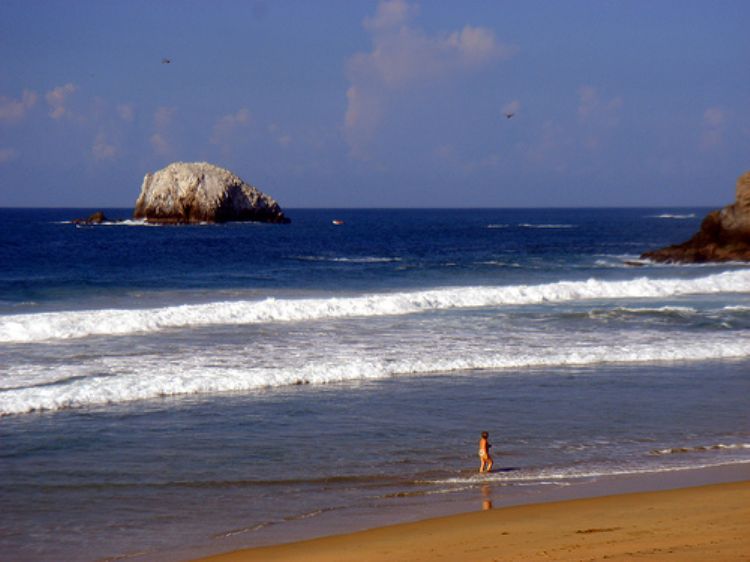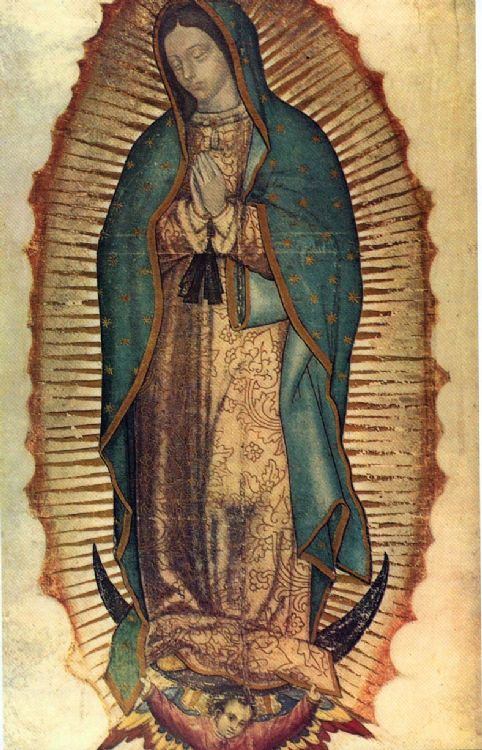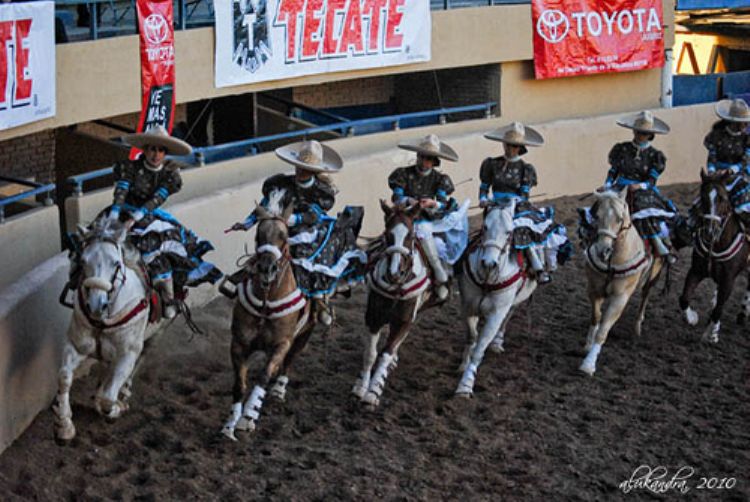.jpg)
One of UNESCOâs goals is for men and women to have spir...

OAXACA DE JUAREZ and Historic District
The rich cultural tradition of the city of Oaxaca de Juarez is highly concentrated within its historical core, where visitors may enjoy a stroll around the main square known as the Zocalo, and along the tree-lined avenue called the Alameda de Leon.
The district also contains two remarkable buildings worth the visit, the Government Palace, built with quite an exquisite green stone locally quarried; and the Municipal Palace, formerly the convent of La Soledad and built in the XVII century.
On the other hand, the Antonia Labastida Garden displays pictorial and artisan works for sale made by local artists, not to mention all that is offered at the traditional
Oaxaca markets, such as the Juarez Market and the "20 de Noviembre", attractions in their own right as they are true expressions of the local culture, filled with color, sounds and scents.
A good example of domestic architecture of the XVIII century in the region is the large residence now home to the Oaxaca Contemporary Art Museum or MACO, a cultural institution created with the support of the state government, the Jose F. Gomez Foundation represented by painter Francisco Toledo, and by the National Institute for the Fine Arts. The current museum collection exhibits paintings from local artists like Rufino Tamayo, Toledo himself, Nieto and Aquino, among others.
The Cultures Museum, located in the former convent of Santo Domingo de Guzman, was subject to a large restoration which began back in 1996, and is considered today as one of the best interventions of the sort around Latin America. It displays nothing less than the treasures found in Tomb number 7 of Monte Alban by don Alfonso Caso, as well as many other objects from pre-Hispanic Mexican cultures.
A tip to remember, Saturday is the day for local street markets known as tianguis, a rich cultural experience as streets are literally invaded by people selling and buying craftworks, furniture, clothing, fresh produce and any other item produced across the state.
GUELAGUETZA Los Lunes del Cerro Party
Located at the foothill of the Cerro el Fortin mountain, the city of Oaxaca de Juarez wears its best outfit to celebrate this pre-Hispanic festivity, the name of which means "Mountain Mondays", and goes back to the time when the Aztecs reached the area in the year 1486, and began celebrating the rituals proper to their culture, one of them dedicated to the goddess Centeotl, the maize deity. The event took place on the last two Mondays each July, and asked for the goddess favors on behalf of the fertility of the fields. During those two weeks of ritual, dance and offerings, a young and beautiful maiden represented the physical incarnation of goddess Centeotl, only to be sacrificed at the end of the ritual , which eventually forced the Spanish to ban the practice as they witnessed such events. Curiously, the Dominic missionaries built the temple of Carmen Alto right on top of the Aztec altar.
Since then, catholic missionaries imposed a new celebration to the Oaxaca community, that of the Virgin of MonteCarmelo. As time goes by, this event celebrated by people of mixed races has gained popularity within the region, and as it sometime included gifts given to those attending the ritual and which were brought by participants from all around the state, it acquired the name Guelaguetza which in zapoteca dialect means "to give presents, offerings".
Later on, the state government builds an outdoor theater with more than 11,000 seats over the same Cerro el Fortin mountain, which actually means "small fort".
Currently, this is the location for numerous presentations and performances by musicians and folk dancers from all over the state, among them the dance of the Guerreros Jovenes or "Young Warriors", the dance of the Mazatecos, the Jarabes Serranos and Jarabes de Valle, and many other cultural expressions which have turned this event into one of the most spectacular within Mexican folklore.
BEACHES
The coast of Oaxaca contains no less than nine heavenly bays with benevolent climate, rugged terrain and extraordinary natural beauty. The Huatulco Bays represent a modern and popular tourist destination, specially for those looking for various sporting and recreational activities within a frame of abundant and generous natural settings.
Tangolunda Bay, within the Huatulco Bays, represents one of the favorite options as it offers magnificent beaches, exclusive residential compounds and high-end luxury hotels. The bay with a heart shape is called Cacaluta Bay, of a more relaxed character, with tranquil and peaceful waters surrounded by a rich biological diversity.
The rest of the Huatulco bays also offer wonderful natural resources and tourist infrastructure, and they are called Conejos, Chaue, Chachahual, San Agustin, Riscalillo, Organo and Maguey bays, all of which are also the ideal location for practicing diverse sporting and aquatic activities which include diving, snorkeling,windsurfing, kayaking, descending along the rapids, and of course sport-fishing, mostly marlin, gold-fish, and sail-fish. For those who prefer to stay dry, hiking and climbing are a couple of options, as well as bicycle and horse-back riding trips along the pretty town called la Crucecita or through the Botazoo eco-park. As a tip, tourists are advised to take a guided tour during their first visit, through the whole bay system, which may provide a general idea of options and features, apart from offering a great opportunity to comfortably enjoy the magnificent views and landscapes found throughout these paradisiacal settings.
ARCHEOLOGICAL SITES
As with everything else in Oaxaca, archeological sites are counted by the thousands...uninterruptedly inhabited for no less than 11,000 years, the state has witnessed the evolution of the first American settlers, the first agricultural fields, the first great urban centers...in Oaxaca, historical tales appear to have no end, even if they represent just a fraction of what the pre-Columbian world was like.
El Lugar de los Muertos or the Place of the Dead represents one of the most important of this sites. Known also for its nahuatl name of Mitla, it was an ancient ceremonial city and the most sacred of spiritual centers of the region during the Classical period, as it was dedicated to the teachings regarding the equilibrium to be found in Quetzalcoatl and which allowed those who learned to "transcend and cross the
threshold into divinity". Lets not forget that the Mexicas natives, together with the Egyptians, are the only cultures in human history which have worshiped death to such levels, and for the same reason have conceived this life as just a passage towards true life, the "perfect life found in death".
The Tiger's Mountain or Monte Alban was a also a sacred site for the cultures of the Olmecas and the Zapotecas, built from the year 500 B.C.on, and which operated for 1,300 continuous years until it was finally abandoned in the year 850 of our time.
Inventors of maize from the small grass found in Teozintle, proficient in ancient medicine and great teachers, those generations that built and inhabited Monte Alban shared the wish to transcend this material life filled with limitations.
Other important archeological sites are Yagul, El Señor de las Peñitas, Dainzu and Teotitlan del Valle.
.jpg)
One of UNESCOâs goals is for men and women to have spir...

The Battle of Puebla took place on the 5th of May 1862 in...

January 1st celebrates New Yearâs Day and is a day of o...

As we know, this year new Mexican elements were added to ...

Mexico is an officially secular country where the Church ...

The Spanish language arrived with the Spanish conquerors ...

Considered the Mexican alcoholic beverage by excellence, ...
.jpg)
In order to begin this fun tour, we recommend you lodge f...
